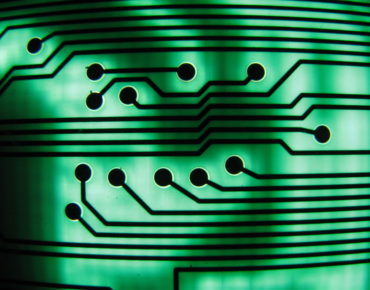Four Big IoT Pitfalls and How to Avoid Them

The Internet of Things (IoT) is the most recent wave of technology disruption, and it’s fundamentally changing how businesses operate, innovate and leverage their resources. While the IoT is most commonly thought of in the context of personal devices, such as wearables, home security and household appliances, commercial applications are increasingly becoming a tool for companies to build competitive advantages. The numbers are staggering considering the infancy of IoT. According to CMO: “By 2020, the amount of Internet-connected things will reach 50 billion, with $19 trillion in profits and cost savings coming from IoT over the next decade.” Forbes magazine recently reported that “the global IoT market will be $14.4 trillion by 2022.”
For companies working on strategies to incorporate IoT into their business offerings and infrastructure, here are four of the biggest IoT pitfalls, along with suggestions for avoiding them:
- Information Overload and Data Management
The core tenets of IoT are data connectivity, communication and integration. Companies are able to create synergies inside their footprint by harnessing massive amounts of data and then utilizing analytics to draw out key insights and trends. IoT enables collection and visualization of this data like never before. Take John Deere, which according to Forbes continues to revolutionize the farming industry. The Deere business model is not just about tractors, but connected equipment that collects, analyzes and disseminates farming data as varied as plowing routes and crop rotations. While all of this data holds enormous potential, the amount of information is so massive, that its storage and management is a fast growing problem. According to industry analysts at International Data Group (IDC): “From 2013 to 2020, the digital universe will grow by a factor of 10 – from 4.4 trillion gigabytes to 44 trillion. It more than doubles every two years.”
The issue becomes how to efficiently manage these data pools. A recent survey by Aberdeen, a global research and consulting firm, revealed that among respondent firms:
- The average IoT organization’s total volume of data grew by 30 percent over the past year.
- Fifty-four percent of IoT organizations reported that their current data analysis capabilities are insufficient.
One solution is to use real-time analytics to analyze data as it is received from IoT ecosystems, and then discard the data that can be determined as not useful or not needed for further analysis. In addition, enterprises should have a plan to remove stored data that becomes outdated. Of course, as the surge of data expands, firms will need to rely on cloud technologies to handle the volume. And companies must consider that their end-users cannot be inundated with information. Presenting targeted, but not overwhelming, content messaging is critical in extracting the maximum effectiveness out of IoT.
- Security is an Afterthought
In today’s world, security is still an afterthought when it comes to IoT solutions. The current phase is still a race to connect devices and equipment as soon as possible. Yet, the reality is that as more “things” are connected to the Internet, the more windows are opened for security breaches. And this is only considering one kind of security breach, where a device is compromised, and the hacker gains access to the data sent and received. Because the sensors used in IoT are often low cost and do not have the mechanisms to authenticate the server, dummy servers can be introduced to hack into an IoT system. False devices and servers can potentially cause denial of service attacks and bring an entire IoT system down. There is also the problem of communication channels not being secure that could lead to eavesdropping.
Companies are responding to this threat. According to the research firm MarketsandMarkets: “The IoT security market is estimated to grow from $7.90 billion in 2016 to $36.95 billion by 2021, at a CAGR of 36.1 percent.”
Firms are realizing security must be a forethought rather than an afterthought. IoT solutions should cover threat analysis, detection of vulnerabilities and incorporate appropriate security solutions such as client authentication, server authentication and message encryption at each required point in an IoT system.
- Lack of Data Privacy
Consumer privacy is another big IoT concern. It is a problem for users as well as enterprises, and it becomes the solution provider’s responsibility to address it carefully. As businesses gather and analyze more and more data with advanced sensor technology, the risk of data privacy loss increases. Consider a hospital system, which uses IoT in health wearables, medical devices and equipment to more rapidly and accurately diagnose and implement treatments. According to Healthcare IT News, the use of IoT “could save $63 billion in healthcare costs over 15 years with a 15 to 30 percent reduction in hospital equipment costs and a 15 to 20 percent increase in patient throughput.” This raises potential security compromises, as stated in the same Healthcare IT News article: “Information security breaches reported by healthcare providers skyrocketed 60 percent from 2013 to 2014 – representing more than double the increase seen in other industries.” Beyond security, businesses in health care and other industries that analyze data can further compromise users’ privacy. Trust in a company’s methods of tracking, usage of information and sales of data to third parties can become long-term concerns.
This problem needs to be handled by the solution provider. Along with data separation and private data protection solutions, ethical data handling practices also need to be put in place.
- Technology Fragmentation
With so many firms in the IoT space, technology fragmentation is another big concern. This applies to both hardware and software technologies. Considering the hardware case, there are myriad vendors offering various sensors and gateways. Sourcing the right hardware for a particular IoT use case becomes a time-consuming job. The same is true for software, where the selection involves a matrix of: communication protocols, publish-subscribe systems, analytics services and visualization tools. And as the IoT universe expands new players are coming into the marketplace, which adds choice complexity. As a result, efforts are underway in the IoT community for standardization of protocols. Further, as companies develop size and breadth in their offerings, the environment will be open for consolidation to capture economies of scale and scope.
Until then, one way to tackle the hardware and software selection dynamic is first to come up with a process that captures the right questions. What are the significant attributes that the organization needs? Identifying these considerations and the answers should help provide logical selection conclusions. While these blueprints take time and effort to establish and maintain as an organization develops, they are a necessary component of seizing the value of IoT. In addition, solutions including using gateways that support multiple protocols and abstracting particular technologies at various layers are means to optimize IoT effectiveness.
IoT holds considerable promise, and the world will benefit tremendously from this technology as connectivity of information and insights transform industries and economies. However, delivering on this promise depends on: device manufacturers, technology providers and ISVs finding solutions to these pitfalls associated with IoT growth.
Krish Kupathil is the founder and CEO of Mobiliya.











